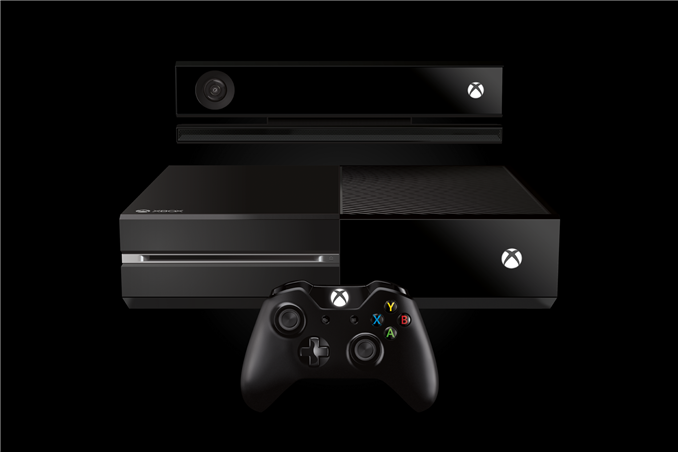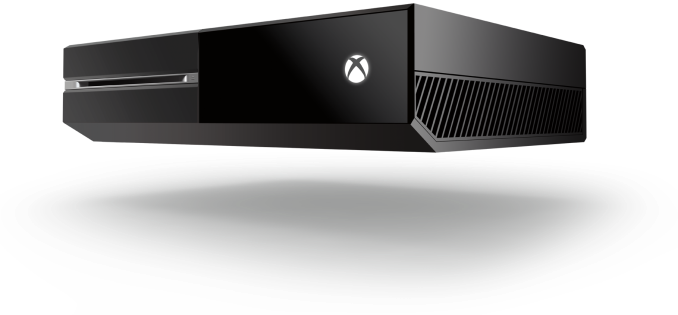The Xbox One: Hardware Analysis & Comparison to PlayStation 4
by Anand Lal Shimpi on May 22, 2013 8:00 AM EST
It’s that time of decade again. Time for a new Xbox. It took four years for Microsoft to go from the original Xbox to the Xbox 360. The transition from Xbox 360 to the newly announced Xbox One will take right around 8 years, and the 360 won’t be going away anytime soon either. The console business demands long upgrade cycles in order to make early investments in hardware (often sold at a loss) worthwhile. This last round was much longer that it ever should have been, so the Xbox One arrives to a very welcoming crowd.
Yesterday Microsoft finally took the covers off the new Xbox, what it hopes will last for many years to come. At a high level here’s what we’re dealing with:
- 8-core AMD Jaguar CPU
- 12 CU/768 SP AMD GCN GPU
- 8GB DDR3 system memory
- 500GB HDD
- Blu-ray drive
- 2.4/5.0GHz 802.11 a/b/g/n, multiple radios with WiFi Direct support
- 4K HDMI in/out (for cable TV passthrough)
- USB 3.0
- Available later this year
While Microsoft was light on technical details, I believe we have enough to put together some decent analysis. Let’s get to it.
Chassis
The Xbox 360 was crafted during a time that seems so long ago. Consumer electronics styled in white were all the rage, we would be a few years away from the aluminum revolution that engulfs us today. Looking at the Xbox One tells us a lot about how things have changed.
Microsoft isn’t so obsessed with size here, at least initially. Wired reports that the Xbox One is larger than the outgoing 360, although it’s not clear whether we’re talking about the new slim or the original design. Either way, given what’s under the hood - skimping on cooling and ventilation isn’t a good thing.
The squared off design and glossy black chassis scream entertainment center. Microsoft isn’t playing for a position in your games cabinet, the Xbox One is just as much about consuming media as it is about playing games.
In its presentation Microsoft kept referencing how the world has changed. Smartphones, tablets, even internet connectivity are very different today than they were when the Xbox 360 launched in 2005. It’s what Microsoft didn’t mention that really seems to have played a role in its decision making behind the One: many critics didn’t see hope for another generation of high-end game consoles.
With so much of today focused on mobile, free to play and casual gaming on smartphones and tablets - would anyone even buy a next-generation console? For much of the past couple of years I’ve been going around meetings saying that before consolidation comes great expansion. I’ve been saying this about a number of markets, but I believe the phrase is very applicable to gaming. Casual gaming, the advent of free to play and even the current mobile revolution won’t do anything to the demand for high-end consoles today or in the near term - they simply expand the market for gamers. Eventually those types of games and gaming platforms will grow to the point where they start competing with one another and then the big console players might have an issue to worry about, but I suspect that’s still some time away. The depth offered by big gaming titles remains unmatched elsewhere. You can argue that many games are priced too high, but the Halo, BioShock, Mass Effect, CoD experience still drives a considerable portion of the market.
The fact that this debate is happening however has to have impacted Microsoft. Simply building a better Xbox 360 wasn’t going to guarantee success, and I suspect there were not insignificant numbers within the company who felt that even making the Xbox One as much of a gaming machine as it is would be a mistake. What resulted was a subtle pivot in strategy.
The Battle for the TV
Last year you couldn’t throw a stone without hitting a rumor of Apple getting into the TV business. As of yet those rumors haven’t gone anywhere other than to point to continued investment in the Apple TV. Go back even further and Google had its own TV aspirations, although met with far less success. More recently, Intel threw its hat into the ring. I don’t know for sure how things have changed with the new CEO, but as far as I can tell he’s a rational man and things should proceed with Intel Media’s plans for an IPTV service. All of this is a round about way of saying that TV is clearly important and viewed by many as one of the next ecosystem battles in tech.
Combine the fact that TV is important, with the fact that the Xbox 360 has evolved into a Netflix box for many, add a dash of uncertainty for the future of high end gaming consoles and you end up with the formula behind the Xbox One. If the future doesn’t look bright for high-end gaming consoles, turning the Xbox into something much more than that will hopefully guarantee its presence in the living room. At least that’s what I suspect Microsoft’s thinking was going into the Xbox One. With that in mind, everything about the One makes a lot of sense.











245 Comments
View All Comments
sri_tech - Wednesday, May 22, 2013 - link
Anand,I replied to you on twitter that this is 28nm SoC. You asked for "source".
As usual, good article.
ON A PALE HOR5E - Wednesday, December 18, 2013 - link
Ok, I am going off on a tangent. I understand technology is expanding, and that CPU's have a huge amount of transistors now on a single die. So with our knowledge and manufacturing capabilities, why are we still make motherboards as big as a VCR? Seems to me a lot of space could be save by creating a semiconductor die, for all those capacitor's, resistor's, inductor's, and other semiconductor packages. After all your spending all that money to develop a new system. Why not make it a sportier, Lighter in weight, and tie it with the newest VR gear, and have a gaming anywhere super system?Shadowmaster625 - Wednesday, May 22, 2013 - link
The embedded RAM + DDR3 paradigm is sort of a gimme to Intel. It probably will not even be that long before intel starts shipping a CPU with embedded RAM and their equivalent of 768 AMD shaders (3x HD5200?). When they do they will be able to snatch up a handful of developers with lots of experience working with that exact setup. It seems like a mistake for AMD to provide such a design knowing it is going to hurt them down the road. This is another "what the hell were they thinking" moments.tipoo - Wednesday, May 22, 2013 - link
Intel is already going down the embedded memory route, AMD is not "providing" anything to them here that they wouldn't already make.Gigaplex - Wednesday, May 22, 2013 - link
I think Shadowmaster625 was implying that AMD is giving developers experience working on such a platform ready for Intel to come in and sweep them up. I don't think it's relevant as there's nothing particularly exotic about having a small amount of fast memory when you consider how developers have had to deal with the Cell chip.tipoo - Wednesday, May 22, 2013 - link
Ah, perhaps I misunderstood. But if it's automatically managed (and Haswell at least certainly is) that's not a consideration.80's Kidd - Thursday, May 23, 2013 - link
Embedded memory is nothing new, Intel had it first with the L1 and L2 cache in the early 90's with their Pentium Pro line.Oxford Guy - Wednesday, January 21, 2015 - link
I think the first microprocessor with embedded memory was the 1975 Fairchild F8 which had 64 bytes of scratchpad. The Motorola 68k line also had internal cache before Intel's x86. The 68040 from 1990 had the same amount of internal cache, 8KiB, as the Pentium Pro. The Pentium Pro, though, had a large on package cache (256KiB to 1 MiB).mfenn - Wednesday, May 22, 2013 - link
So AMD should give up a guaranteed revenue stream from the two biggest console manufacturers for 10+ years just so they won't (as a side effect) train developers on an obvious architecture? That doesn't make any sense.kyuu - Wednesday, May 22, 2013 - link
Don't be absurd. One, this is nothing new. The Xbox 360 used embedded eDRAM, and other consoles have before it.Two, AMD is going to start embedding eDRAM into its APUs in the near future as well.